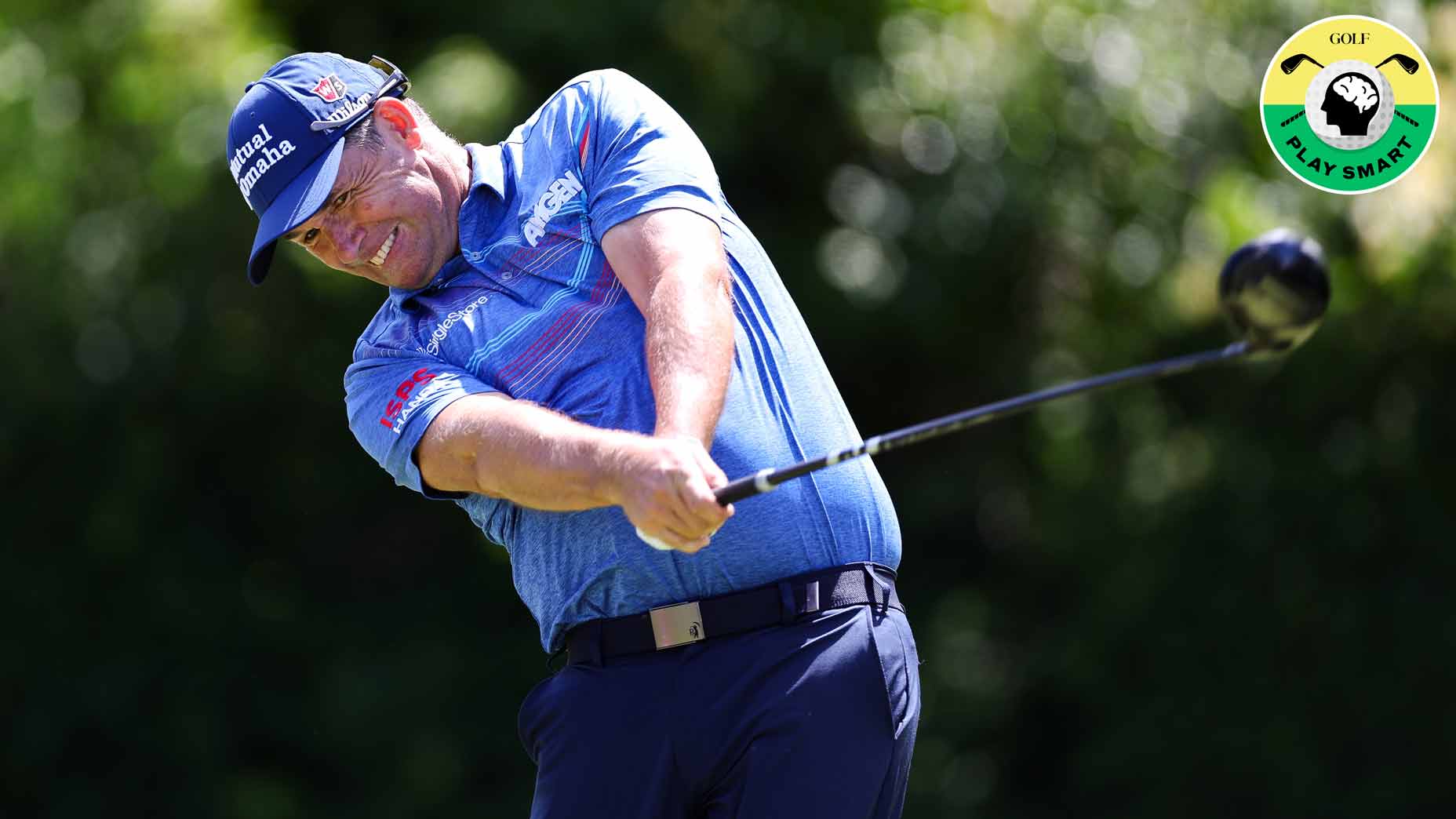Welcome to Play Smart, a regular GOLF.com game-improvement column that will help you play smarter, better golf.
There’s an old adage that says there are only two certainties in life: death and taxes. If you’re a golfer, though, there is a third: missing greens.
While it’d be nice to never miss a green in regulation, that’s just not realistic. Even the best players in the world miss greens. On the PGA Tour last year, players hit just over 66 percent of greens in regulation on average. Over the course of any 18-hole round, this means they’re missing roughly six greens in regulation.
Even while missing a third of greens, though, their scoring average was 71.17. The reason? They’re all tacticians around the greens. Even when they did miss their target, they got up and down with huge success.
Establish a baseline to get up and down more
The first step to getting up and down more is getting out to the short-game area and practicing as much as you can. But you don’t want to just chip around and call it a day. In order to become a short-game wizard, you need to establish a baseline.
“Most people, they don’t have a basic shot,” says GOLF Top 100 Teacher Jon Tattersall. “I’d like you to hit your sand wedge or lob wedge — which ever you prefer.”
With these high-lofted wedges, the smash factor (ball speed divided by club speed) is about 1.0. This is helpful for us when determining a baseline with our wedges.
“That’s an awesome thing,” Tattersall says. “So if we have 35 yards we want to hit it, what I want you to do is swing it 35 miles an hour.”
Obviously, to really dial this in, you’ll need to use a launch monitor. But once you get in front of that tech, you’ll see and feel how fast you need to swing for your baseline chip.
After establishing this baseline, every other shot will work off of that number and feeling. If you need to hit it further, you’ll give it a little more power. If you have a lie that is going to cause the ball to come out hot, you can take a little off.
“To me [short game] is not all feel,” Tattersall says. “If you know how to hit a 30-yarder, now you know what a 25 is and a 35 is, you can kind of wiggle around in that area.”
If you want to save par more often, it all starts with establishing a baseline.











